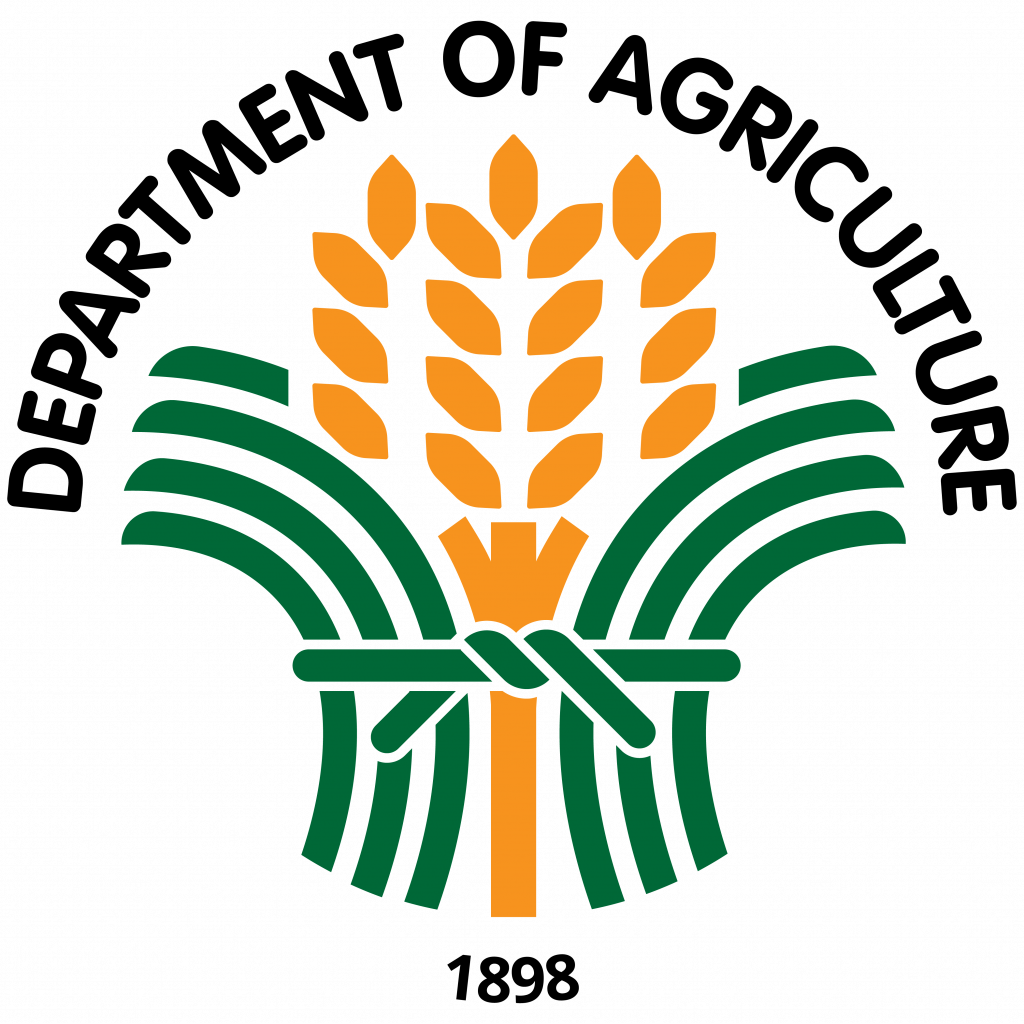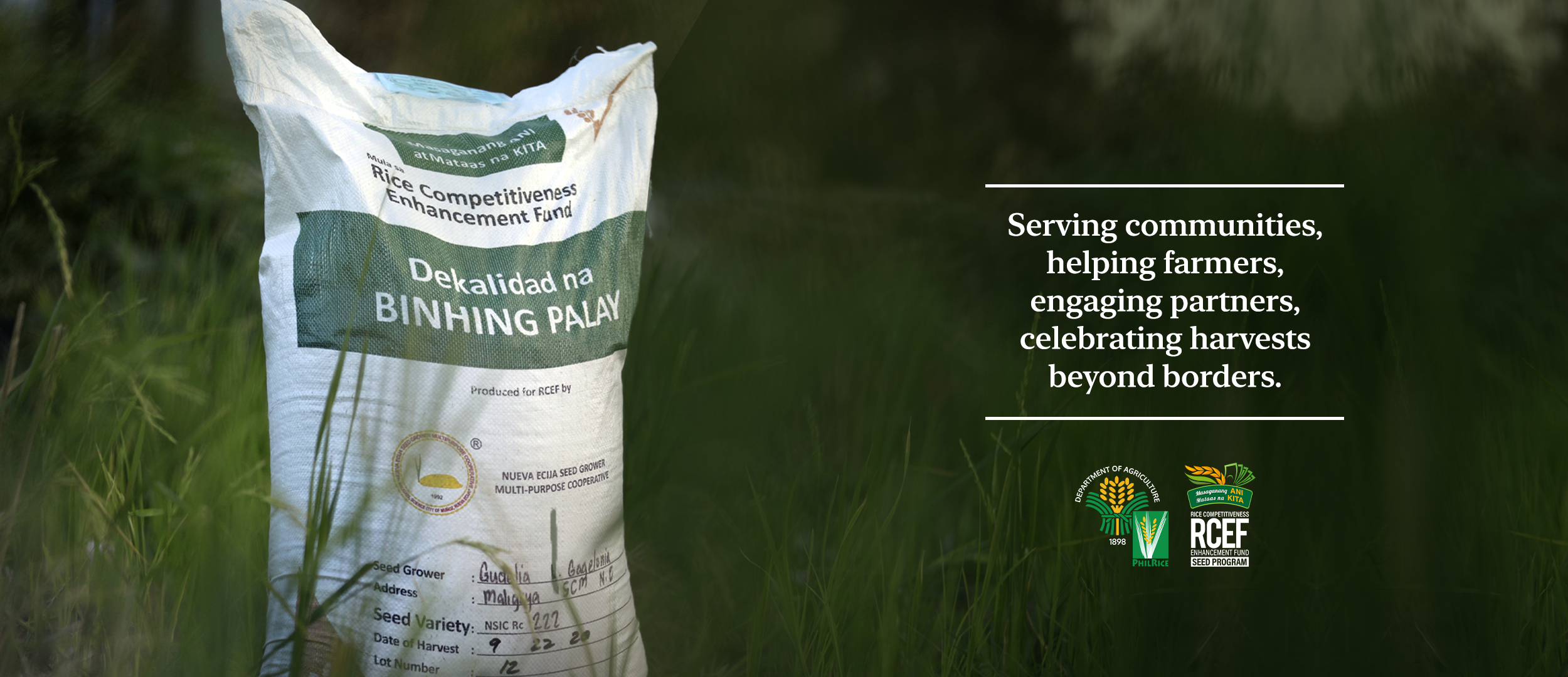
Legal Basis
The Rice Tariffication Law (Republic Act No. 11203) has created the Rice Competitiveness Enhancement Fund (RCEF) to help Filipino rice farmers prosper and become globally competitive.
The RCEF allocates ₱10 billion to four component programs: mechanization (₱5B), seeds (₱3B), extension (₱1B), and credit (₱1B).
The RCEF-Seed Program (RCEF-Seed) is intended for the development, propagation and promotion of inbred rice seeds, and organization of rice farmers into seed grower cooperatives and associations engaged in seed production and trade.
Objectives
The overarching goal of RCEF centers on improving the competitiveness and increasing the income of the Filipino rice farmers through yield improvement, cost reduction, lowering of postharvest losses, and rice value-addition.
The RCEF-Seed directly contributes in yield improvement. Specifically, it aims to:
- increase the adoption of certified seeds (CS) of inbred rice;
- improve quality, availability of, and access to inbred rice CS; and
- increase the number of farmers’ organization engaged in seed production and trade.
Key Implementers
The DA-Philippine Rice Research Institute (DA-PhilRice) leads the implementation of the RCEF-Seed. It converges with the implementing agencies of the other RCEF components to achieve the overall goal. These agencies include DA-PHilMech, DA-Agricultural Training Institute, Landbank of the Philippines, Development Bank of the Philippines, and TESDA.
DA-PhilRice works hand-in-hand with the City/ Municipal Agriculture Office (C/MAO) of the Local Government Units (LGU), in collaboration with the Office of the Provincial Agriculturist (OPAG), to facilitate registration of farmers in the Registry System for Basic Sectors in Agriculture (RSBSA), and to enable delivery and distribution of certified seed of inbred rice varieties to the target areas.
DA-PhilRice also closely coordinates with DA-Field Operation Service and DA-Regional Field Offices to ensure that RCEF complements and supplements the national rice industry development initiatives.
The key role of legislators both at the Senate and House of Representatives in assuring the availability of funds for the program is also well recognized.
Component Projects and Sub-Projects
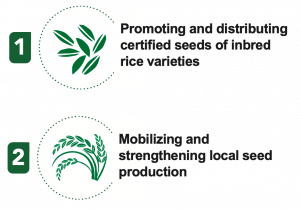
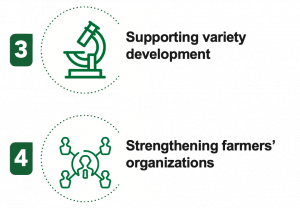
- Promoting and distributing certified seeds of inbred rice varieties
- Acquisition and distribution of certified seeds
- Technology demonstrations and field days (PalaySikatan)
- Mobilizing and strengthening local seed production
- Basic seed production
- Support to seed production
- Improvement of seed quality control services
- Development of RCEF Seed Monitoring System
- Supporting variety development
- National Cooperative Test
- DNA profiling of Philippine-released varieties
- Strengthening farmers’ organizations
- Seed promotion through strategic communication
- Strengthening farmer and seed grower associations
Information, education, and communication (IEC) materials on high-yielding and cost-reducing technologies in rice production were also provided to the program’s recipients through the communication support services project of the RCEF-Extension Program co-implemented by the DA-PhilRice.
Coverage Area and Period
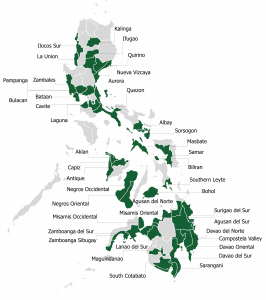
Originally, the RCEF-Seed covers 57 provinces, which are selected based on yield, area harvested, cost of production, and percentage of irrigated area. The program operates in cities and municipalities within these provinces with at least 100ha rice area.
Starting 2021 wet season (WS), the program is focusing in 42 provinces with low to medium yield and limited certified seed adoption to create greater impact. This is part of the ONE-DA approach under the recalibrated Integrated Rice Program.
The program commenced in 2020 dry season (DS [Sep 16, 2019 – Mar 15, 2020]) and is expected to continue until 2025 DS (Sep 16, 2024 – Mar 15, 2025).
The National Rice Program now caters to the 15 provinces with relatively higher yield and better suitability to hybrid rice technology. These are Ilocos Norte, Pangasinan, Cagayan, Isabela, Nueva Ecija, Tarlac, Occidental Mindoro, Oriental Mindoro, Camarines Sur, Iloilo, Leyte, Bukidnon, North Cotabato, and Sultan Kudarat. The RCEF-Seed initially served these provinces. Nevertheless, the other RCEF components such as mechanization, extension and credit are still being implemented in the said provinces.
Recipients
The eligible beneficiaries of the RCEF-Seed are individual farmers listed in the RSBSA, and are members of DA-accredited rice cooperatives and associations. The rice farm cultivated by a beneficiary must be located in the target provinces.
Requirements for Recipients


Actual farmer
- Valid ID or barangay certification
- RSBSA stub
Authorized representative
- Valid ID and RSBSA stub of farmer/s to be represented
- Duly signed authorization letter
- Valid ID of authorized representative
How can farmers enroll in the RSBSA?
Requirements:
- One Valid ID (e.g. National ID, Voter’s ID, Passport, TIN, Postal ID, SSS, Senior Citizen ID, UMID)
- Proof of land ownership (photocopy of land title, individual certificate of land ownership award, certificate of land transfer, emancipation patent, agricultural sales patent, homestead patent, free patent, certificate of ancestral domain title, certificate of ancestral land title, tax declaration)
- ID picture taken within the last six (6) months
Process:
 Get RSBSA form from C/MAO and fill it out.
Get RSBSA form from C/MAO and fill it out. Have the C/MAFC Chairperson and Barangay Chairperson sign the accomplished form.
Have the C/MAFC Chairperson and Barangay Chairperson sign the accomplished form. Submit the accomplished form to the C/MAO for assessment and assignment of RSBSA number.
Submit the accomplished form to the C/MAO for assessment and assignment of RSBSA number. The Office of the Provincial Agriculturist (OPAG) consolidates and endorses the accomplished forms to the DA-Regional Field Office for encoding in the National Farmer and Fisherfolk Registry System.
The Office of the Provincial Agriculturist (OPAG) consolidates and endorses the accomplished forms to the DA-Regional Field Office for encoding in the National Farmer and Fisherfolk Registry System. The farmer will receive the RSBSA stub with control number and official stamp as security features.
The farmer will receive the RSBSA stub with control number and official stamp as security features.
How can farmers claim seed?
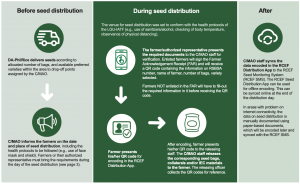
Before seed distribution;
- DA-PhilRice delivers seeds to assigned drop-off points as assigned by the C/MAO according to allocated number of bags, and available preferred varieties within the area
- C/MAO informs the farmers on the date and place of seed distribution, including the health protocols to be followed (e.g. use of face mask and face shield). Farmers or their authorized representative must bring the requirements during the day of the seed distribution
During seed distribution:
The venue for seed distribution was set to conform with the health protocols of the LGU-IATF (e.g., use of sanitizers/alcohol, checking of body temperature, observance of physical distancing).
- The farmer/authorized representative presents the required documents to the C/MAO staff for verification. Enlisted farmers will sign the Farmer Acknowledgement Receipt (FAR) and will receive a QR code containing the information on RSBSA number, name of farmer, number of bags, variety selected.
Farmers NOT enlisted in the FAR will have to fill-out the required information in it before receiving the QR code.
- Farmer presents his/her QR code for encoding in the RCEF Distribution App.
- After encoding, farmer presents his/her QR code to the releasing staff. The C/MAO staff releases the corresponding seed bags, collaterals and/or IEC materials to the farmer. The releasing officer collects the QR codes for reference.
After seed distribution:
- C/MAO staff syncs the data encoded in the RCEF Distribution App to the RCEF Seed Monitoring System (RCEF SMS). The RCEF Seed Distribution App can be used for offline encoding. This can be synced online at the end of the distribution day.
In areas with problems on internet connectivity, the data on seed distribution is manually documented using paper-based documents, which will be encoded later and synced with the RCEF SMS.
